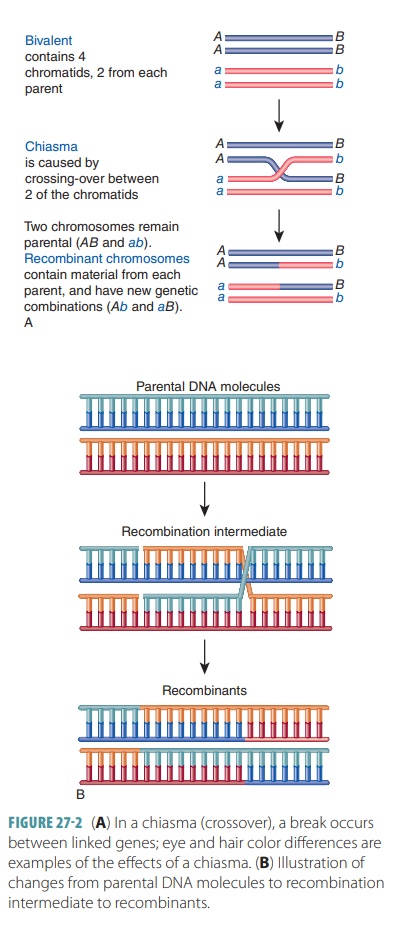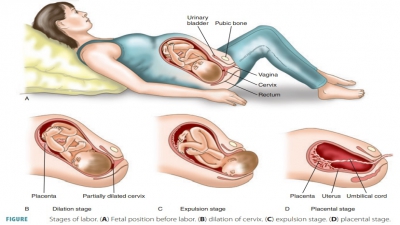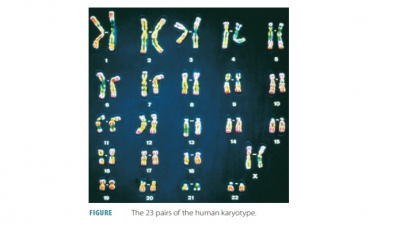Genetic Variation
| Home | | Anatomy and Physiology | | Anatomy and Physiology Health Education (APHE) |Chapter: Anatomy and Physiology for Health Professionals: Heredity
Genetic variation results from the crossing over and exchange of chromosomal parts, and occurs during meiosis II.

Genetic
Variation
Genetic variation results from the crossing over and
exchange of chromosomal parts, and occurs during meiosis II. Every individual
has a unique genotype and phenotype. This is based on three events: chromo-some
segregation and independent assortment, cross of homologues and gene
recombination, and random fertilization.
Chromosome Segregation and Independent Assortment
Each pair of replicated homologous chromosomes synapses during meiosis I. A tetrad is
formed during both spermatogenesis
and oogenesis. The tetrads are randomly aligned on the meiosis I metaphase
spin-dle. Therefore, maternal and paternal chromosomes become randomly
distributed to the daughter nuclei. Also, gametes vary widely in their design.
The two most important points about the metaphase of meiosis I are:
■■ Two alleles determine each trait
and these are segregated
to different gametes. When errors occur in this process, they may result in can cer
progression, Down syndrome, or infertility. Down syndrome is the most common
cause of trisomy 21 and occurs as maternal disjunction at meiosis 1.
■■ With homologous chromosomes,
alleles on the different pairs are distributed independently. This results in
each gamete having a single allele for each trait. That allele represents just
one of four possible parental alleles.
There is a method for calculating the number of different
gamete types that result from the independent assortment of homologues during
meiosis I. The formula
is known as 2n. The letter “n” refers to the num-ber of homologous pairs.
Therefore, if there are three homologous pairs, the formula would mean:
23 = (2 × 2 × 2). This equals eight different gamete types.
The number of gamete types increases greatly as the
chromosome number increases. If a cell has six pairs of homologues, it would
produce 26 or 64 types of gametes. Another example is the amount of
gam-etes able to be produced within a male’s testes, based only on independent
assortment. This is 223 = about 8.5 million! However, in a female’s
ovaries, the number of gamete types is much less. This is due to the ovaries
completing no more than 500 reduction divisions over her reproductive lifetime.
However, every ovulated oocyte is usually unique in genetic terms due to
inde-pendent assortment.
Crossover of Homologues and Gene Recombination
Crossover is the result of recombination of genes on
homologous pairs of chromosomes during meiosis. During meiosis I, genes are
linearly arranged down the length of each chromosome. Genes on the same
chro-mosome are called linked, since
they are transmitted as a unit to daughter cells. Chromosomes can break,
however, precisely exchanging gene segments with their homologues. This leads
to recombinant chromosomes, which have mixed
components from each
parent. Gene recombination results in chromo-somes that have mixed
contributions from each parent.
In a chiasma
(crossover), a break occurs between linked genes (FIGURE 27-2). An example of this may be when one gamete has alleles for
brown eyes and blond hair, while another gamete has alleles for blue eyes and
brown hair. Because of this crossover, two of the four chromatids found in the
tetrad will have a mixed set of alleles. Some of these are maternal and some
are paternal. Therefore, when the chromatids become seg-regated, each gamete
will have a unique combination of parental genes. Since humans have 23 tetrads
and crossovers occur in all of them during meiosis I, the possible variations
are significant.

Random Fertilization
A single human egg is fertilized by a single sperm on a
completely random basis. Therefore, from random fertilization and independent
assortment alone, there may be one of approximately 72 trillion different
pos-sible zygotes. Additionally, further variations occur because of crossover,
making this number much larger. This helps to explain both the vast differences
and also the similarities between siblings.
1. Why is there such a large difference in the amount of
gametes that can be produced by a male compared to a female?
2. How can
the term “chiasma” be defined?



